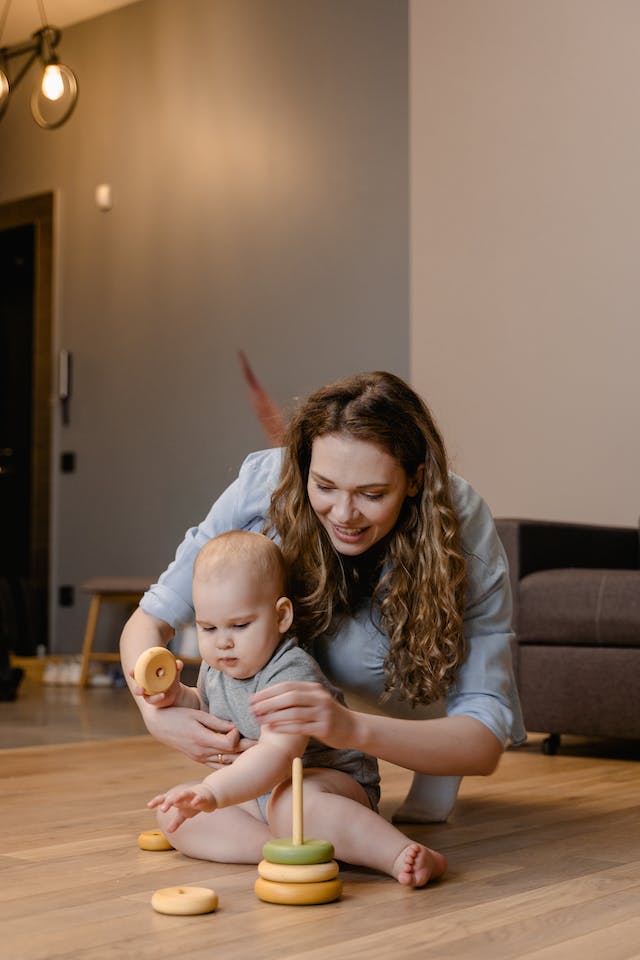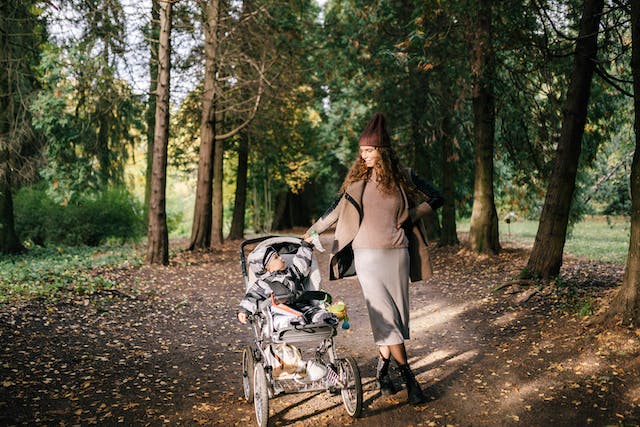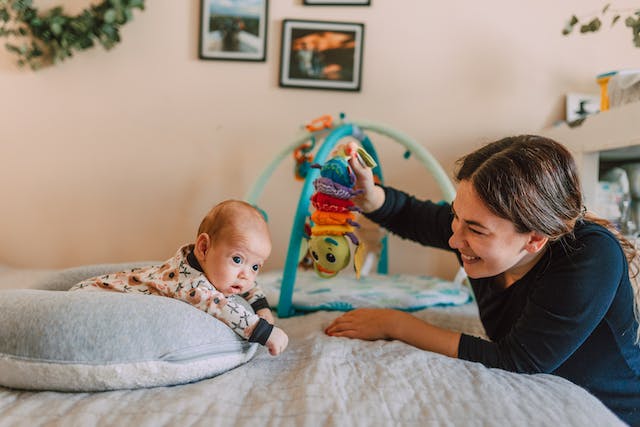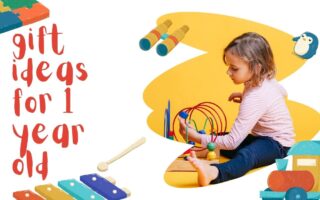From the moment your little one enters the world, their brain is ready to soak up information like a sponge. As a parent, you naturally want to provide them with the best opportunities to thrive and develop. You want to do different fun things with your newborn baby.
In this article, we have compiled a list of different engaging and interactive activities that will help boost your newborn’s cognitive, emotional, and physical growth. Whether it’s tummy time exercises to strengthen their neck muscles, playing peek-a-boo to hone their visual tracking abilities, or introducing them to the magic of music through lullabies, each activity is a delightful way to bond with your baby while supporting their early development.
By incorporating these activities into your daily routine, you can help lay a solid foundation for their physical, social, and intellectual growth. Remember, every baby is unique, so feel free to customize these activities to suit your little one’s personality and developmental progress.
Table of Contents
1. Sensory fun activities for newborn
Sensory activities for newborns are important for their early development and can provide opportunities for them to explore and engage with the world around them. Here are some sensory activities suitable for newborns:
Skin-to-Skin Contact:
Holding your newborn close to your skin provides a warm, comforting, and sensory-rich experience. It promotes bonding and regulates their body temperature and heartbeat.
Gentle Touch:
Use soft, safe materials such as a gentle, clean, and baby-friendly fabric or a soft brush to stroke your baby’s skin. This tactile stimulation can be soothing and help your newborn become accustomed to touch.
Soft Toys and Textures:
Introduce soft, textured toys that your baby can explore by touch. Let them feel different textures with their hands and fingers.
Visual Stimulation:
Newborns are drawn to high-contrast patterns and simple, bold shapes. Use black and white toys, pictures, or mobiles with contrasting colors. Slowly move these items within your baby’s line of sight.
Auditory Stimulation:
Newborns are highly responsive to sounds. You can engage them with soothing lullabies, gentle music, or even just the sound of your voice. Soft, rhythmic sounds and shushing noises can be comforting.
Mirror Play:
Show your baby their reflection in a baby-safe, unbreakable mirror. This can be fascinating for newborns and help them become more aware of their own movements and expressions.
Scent Exploration:
Your newborn’s sense of smell is well-developed. Use natural, pleasant scents, like a clean baby blanket or your own scent, to comfort and stimulate them.
Taste Exploration:
While newborns don’t eat solid food, they still have a sense of taste. You can let them suck on clean, safe objects or introduce them to a pacifier.
Cuddle and Rocking:
Holding your baby, cuddling them, and gently rocking back and forth provides a comforting sensory experience. It can be soothing and help with bonding.
Remember to always prioritize your baby’s safety during these activities. Keep a close eye on them, ensure the environment is free from hazards, and use age-appropriate toys and materials. Sensory activities not only stimulate a newborn’s senses but also contribute to their overall development and provide opportunities for bonding between the caregiver and the baby by engaging in these fun activities with newborn baby.
2. Tummy time and its benefits for newborn development
Tummy time is time when your newborn baby spends some time on their tummy when they are awaken and supervised by their caregiver. There are many question that comes in parents mind like when to start doing tummy time, how to do it, what are the benefits of it, how long to do it and so on.
The importance of tummy time can’t be ignored, it helps baby to strengthen their neck, hand and leg muscles as well as helps them to crawl and walk. Tummy time doesn’t mean that your baby can sleep on tummy: Sleep time should be only on back to reduce the risk of SIDS and play time can be on tummy.
Tummy time is time when your newborn baby spends some time on their tummy when they are awaken and supervised by their caregiver. There are many question that comes in parents mind like when to start doing tummy time, how to do it, what are the benefits of it, how long to do it and so on.
The importance of tummy time can’t be ignored, it helps baby to strengthen their neck, hand and leg muscles as well as helps them to crawl and walk. Tummy time doesn’t mean that your baby can sleep on tummy: Sleep time should be only on back to reduce the risk of SIDS and play time can be on tummy.
When to start doing tummy time for babies?

3. Interactive fun things to do with newborn
Interactive playtime with newborns is essential for their development and provides an opportunity for bonding and stimulation. Here are some interactive playtime ideas and activities for newborns:
Eye Contact and Smiles:
Newborns are naturally drawn to faces. Spend time making eye contact and smiling at your baby. They will often respond with their own facial expressions.
Sing and Talk:
Babies love to hear their caregivers’ voices. Sing lullabies, nursery rhymes, or simply have conversations with your baby. This not only soothes them but also helps with language development.
High-Contrast Toys:
Babies are attracted to high-contrast patterns and bold, simple shapes. Use black and white toys or toys with high-contrast colors to capture their attention.
Rattles and Soft Toys:
Simple, soft rattles and plush toys are great for engaging newborns. These toys can be shaken to produce sounds, which can be fascinating for babies.
Mobiles:
Hang a colorful mobile with simple shapes and toys above the baby’s crib or play area. Gently move the mobile to capture their attention and encourage tracking.
Peek-a-Boo:
Play peek-a-boo with your baby using a soft cloth or your hands. This game helps teach them object permanence and can be a source of delight. I always had a lot of fun with my newborn while playing this.
Baby Gym:
Some baby gyms come with attached toys and dangling objects that can be swatted at or grasped. These are great for visual and motor stimulation.
Story time:
Even though your baby is too young to understand the story, reading to them exposes them to language and helps create a routine. Choose board books with bright colors and simple illustrations.
Puppet Shows:
Use soft hand puppets to engage your baby in playful puppet shows. Make the puppets “talk” and interact with your baby.
Gentle Swinging and Rocking:
Rock your baby in your arms or use a gentle baby swing. The rhythmic motion can be soothing and enjoyable for many infants.
4. Music and movement activities for newborns
Music and movement activities for newborn can be a fun and engaging way to promote sensory development, stimulate their senses, and encourage bonding with caregivers. Here are some ideas for music and movement activities suitable for newborns:
Gentle Lullabies and Singing:
Singing lullabies or soft songs to your newborn can be soothing and comforting. Hold your baby close and sing gentle tunes to create a calming atmosphere.
Dance and Sway:
Holding your baby in your arms, gently sway or dance to music. Your baby will enjoy the movement and the close physical contact.
Rhythmic Rocking:
Rock your baby in your arms or a rocking chair in time with soft music. The rhythmic motion can be soothing.
Baby Bouncing:
Gently bounce your baby on your knee while singing or playing music. Always support their head and neck during these movements.
Musical Shakers:
Use soft, baby-safe musical shakers or rattles that make gentle sounds when shaken. Babies are often fascinated by the sound and movement.
Gentle Drumming:
Use your hands to create soft, rhythmic drumming on your baby’s back or on a soft surface. This tactile and auditory experience can be enjoyable.
Musical Play Mat:
Some play mats come with built-in music and lights. Lay your baby on the mat and let them enjoy the sensory experience.
Baby wearing Dance:
If you use a baby carrier or wrap, put on some music and dance while wearing your baby. The gentle bouncing and swaying can be fun for newborn baby.
Nature Sounds:
Play recordings of nature sounds like gentle rain or flowing water to create a calming environment for your baby.
Finger Plays:
Simple finger plays like “This Little Piggy” or “Pat-a-Cake” can be entertaining for newborns. The tactile and rhythmic nature of these activities can capture their attention.
Always ensure that the music played is at a comfortable volume for your baby, and monitor their reactions to ensure they are enjoying the activities. Music and movement activities not only provide sensory stimulation but also offer opportunities for bonding and creating a positive association with music from a young age.
5. Reading and language development activities for newborns
Reading and language development activities for newborns are essential for fostering early literacy skills and building a strong foundation for language development. Here are some activities to promote reading and language development for newborns:
Read Aloud:
Begin reading to your newborn from birth. Choose age-appropriate board books with large, colorful pictures and simple text. Reading aloud exposes them to language, rhythm, and the sound of your voice.
High-Contrast Books:
Newborns are drawn to high-contrast patterns and bold images. Consider books with black and white or high-contrast pictures, as these can capture their attention.
Sing Songs and Rhymes:
Sing nursery rhymes and lullabies to your baby. The repetitive patterns and rhyming words in these songs can help with language development and phonological awareness.
Talk to Your Baby:
Engage in conversations with your newborn. Describe what you’re doing and what’s happening around them. This helps them absorb language and build vocabulary.
Point and Label:
While reading, point to objects in the book and label them. For example, say, “This is a cat,” as you point to a picture of a cat. This reinforces word-object associations.
Choose Interactive Books:
Look for touch-and-feel or lift-the-flap books that encourage your newborn baby to have fun, explore and interact with the book.
Read with Expression:
Use different tones of voice and facial expressions while reading. This makes the story more engaging and helps your baby understand the emotional content of the text.
Create a Reading Routine:
Establish a reading routine as part of your baby’s daily schedule, such as before bedtime or after a feeding. Consistency helps your baby associate reading with comfort and closeness.
Bath Time Stories:
Read waterproof bath books to your baby during bath time. This can make bath time a fun and educational experience.
Name the Environment:
As you move around your home, name objects and describe them to your baby. This helps them connect words to the things they see and experience.
Remember that these activities should be relaxed and enjoyable for both you and your baby. The goal is to create a positive association with reading and language. It’s never too early to start building your baby’s language skills, and these activities will set the stage for future language development.
6. Baby massage and its impact on newborn development
Baby massage is an ancient practice that has been used around the world for centuries to help babies grow and develop. It’s also a wonderful way to bond with your newborn and help them feel safe and secure.
Baby massage is a great way to promote healthy growth and development in your baby. It can also help relieve stress and anxiety, improve sleep, and even strengthen the baby growing muscles.
Best Oil for baby massage and benefits of each oil
7. Outdoor activities for newborns

Outdoor activities for babies are a great way to introduce them to the natural world and provide sensory stimulation. All newborn baby have fun and enjoys when taking them outdoors but always prioritize safety, ensure they are protected from the elements, and avoid direct sunlight. Here are some outdoor activities suitable for newborns:
Stroller Walks:
Taking your baby for a stroll in a stroller is a simple and enjoyable outdoor activity. Choose a time when the weather is pleasant, and your baby is well-rested. This can be a great way to introduce them to new sights, sounds, and fresh air.
Baby Carrier Adventures:
If you have a suitable baby carrier or wrap, you can wear your baby while you go for a walk. This allows for close physical contact and provides them with a different perspective of the outdoor environment.
Nature Exploration:
Take your baby to a local park or garden and let them observe the natural surroundings. You can introduce them to the sounds of birds, the rustling of leaves, and the feeling of wind on their skin.
Picnic in the Park:
Find a shady spot in the park or your backyard, lay out a blanket, and enjoy a simple picnic with your baby. You can sit and chat while they take in the surroundings.
Outdoor Sounds:
Sit in a comfortable outdoor spot and talk to your baby while pointing out various sounds in the environment. You can mention birds chirping, leaves rustling, or distant traffic sounds.
Gentle Swing Time:
Many parks have baby swings that are designed for newborns. You can give your baby a gentle push and allow them to experience the sensation of swinging.
Beach Visit:
If you live near a beach, consider taking your baby for a visit. You can sit by the water’s edge, allowing your baby to watch the gentle waves and feel the sand.
Gentle Water Play:
If it’s a warm day, you can fill a baby pool with a small amount of water and let your baby splash their feet and hands. Always supervise closely during water play.
Cloud Watching:
Find a comfy spot in the grass and look up at the sky together. Talk to your baby about the shapes of the clouds and the colors in the sky.
Botanical Gardens:
Explore a local botanical garden, which often features a wide variety of plants and beautiful natural settings. The colors and scents can be stimulating for your baby.
Hike with a Baby Carrier:
If you enjoy hiking, consider using a baby carrier designed for hiking. This allows you to enjoy nature while keeping your baby close and safe.
Visit a Petting Zoo:
Some petting zoos or farms allow you to visit with gentle animals like goats or rabbits. Your baby can observe and interact with animals from a safe distance.
Remember to dress your baby appropriately for the weather, and use sunscreen or protective clothing to shield them from the sun’s harmful rays. Keep outdoor activities short and enjoyable, taking into account your baby’s feeding and napping schedule.
Safety precautions and guidelines for stimulating newborn development
Safety is of utmost importance when engaging in activities to stimulate newborn development. Here are some safety precautions and guidelines to ensure your newborn’s well-being during these activities:
- Always supervise your newborn closely during any developmental or fun activities. Never leave your baby unattended, even for a moment, especially when they are engaged in activities such as tummy time.
- Use only age-appropriate toys and materials. Make sure they are free from small parts that could pose a choking hazard.
- Baby-proof your home to prevent accidents. Secure bookshelves and heavy furniture to the wall, cover electrical outlets, and keep cords out of reach.
- Ensure that baby gear, such as swings, bouncers, and carriers, are used according to the manufacturer’s instructions. Buckle your baby in securely to prevent falls.
- Keep your baby and their environment clean. Wash your hands before handling your baby, and regularly clean toys and play areas to prevent the spread of germs.
- Maintain a comfortable room temperature (around 68-72°F or 20-22°C) and dress your baby in appropriate clothing. Avoid overheating or over bundling your baby.
- Protect your baby from the sun by using a baby-friendly sunscreen, dressing them in lightweight, long-sleeved clothing, and using a sun hat. Limit sun exposure, especially during peak hours.
- If you introduce water play or take your baby to a pool, ensure they are within arm’s reach at all times.
- Always supervise your baby during bath time. Have all necessary bathing supplies within arm’s reach, and never leave your baby unattended in the water.
- If you have concerns about any developmental activities or your baby’s safety, consult your pediatrician for guidance and recommendations.





